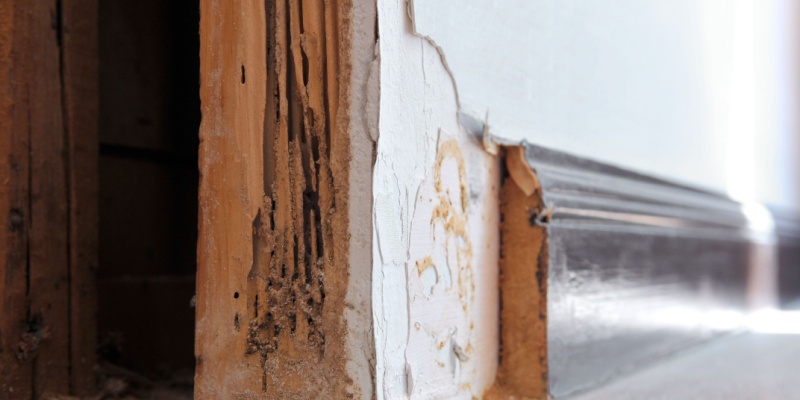Termites can be a homeowner's worst nightmare, silently causing damage until it's too late. Identifying a serious termite problem early can save you from extensive repairs and costly damage. Here are some obvious signs that you have a severe termite infestation:
Key Indicators of a Major Termite Problem
1. Large Swarms of Winged Termites
Seeing large swarms of winged termites, also known as swarmers, inside or around your home is a significant warning sign. Swarmers emerge to mate and establish new colonies. If you notice these insects, it means there's a mature colony nearby, possibly within your home.
2. Extensive Mud Tubes
While a few mud tubes can indicate a termite presence, extensive networks of these tubes suggest a serious infestation. Mud tubes are used by subterranean termites to travel between their colony and food source. Large numbers of tubes on your walls, foundation, or crawl spaces mean termites are actively invading your home.
3. Hollow or Buckling Wood
Termites eat wood from the inside out, causing it to become hollow and weak. If you tap on wood structures and hear a hollow sound, or if you notice wood buckling or blistering, it’s a clear indication of severe termite damage. This type of damage can compromise the structural integrity of your home.
4. Visible Tunneling in Wood
When termites consume wood, they leave behind tunnels and galleries. If you see maze-like patterns or visible tunneling in wooden beams, furniture, or flooring, it’s a sign of a significant infestation. This damage often appears just below the surface of the wood.
5. Frass Piles
Drywood termites leave behind frass, which are tiny, pellet-like droppings. Finding large piles of frass around wooden structures indicates a serious infestation. These droppings resemble sawdust or coffee grounds and can accumulate near infested wood.
6. Sagging Floors and Ceilings
Termite damage can cause floors and ceilings to sag or buckle. If you notice uneven floors or bulging ceilings, it could be due to extensive termite damage. This is a serious structural issue that requires immediate attention.
7. Doors and Windows That Stick
Termites can damage the wooden frames of doors and windows, causing them to warp. If your doors and windows suddenly become difficult to open or close, it could be a sign of termite damage. This is often one of the first noticeable signs homeowners encounter.
8. Unexplained Cracks in Walls and Ceilings
Termite damage can also cause cracks in walls and ceilings. If you notice new, unexplained cracks in your home’s structure, it could be due to termites weakening the wood and other building materials.
Taking Action: What to Do Next
1. Professional Inspection
If you observe any of these signs, it’s crucial to contact a professional pest control company for a thorough inspection. Professionals have the tools and expertise to accurately identify and assess the extent of a termite infestation.
2. Immediate Treatment
A serious termite problem requires immediate treatment. Pest control experts can recommend the best course of action, whether it's chemical treatments, bait systems, or other methods to eradicate the termites and prevent further damage.
3. Repairing Damage
Once the infestation is under control, it's important to repair any damage caused by the termites. This may involve replacing damaged wood, reinforcing weakened structures, and addressing any moisture issues that contributed to the infestation.
Preventative Measures to Avoid Future Infestations
1. Regular Inspections
To prevent future termite problems, schedule regular inspections with a professional pest control company. Annual inspections can help detect early signs of termite activity before it becomes a serious issue.
2. Moisture Management
Since termites are attracted to moisture, ensuring your home is dry and well-ventilated is key. Fix any leaks, maintain proper drainage, and use dehumidifiers in damp areas to reduce moisture levels.
3. Barrier Treatments
Consider investing in termite barrier treatments around your home’s foundation. These treatments create a chemical barrier that termites cannot cross, effectively preventing them from entering your home.
4. Proper Maintenance
Keep your home in good repair by sealing cracks and gaps, maintaining a clean and dry environment, and storing wood and lumber away from your home's foundation. Proper maintenance can go a long way in preventing termite infestations.
A serious termite problem can cause significant damage to your home, but early detection and professional intervention can mitigate the impact. Stay vigilant for signs of termites, schedule regular inspections, and take preventative measures to protect your home from these destructive pests. Your vigilance today can save you from extensive repairs and headaches tomorrow.

